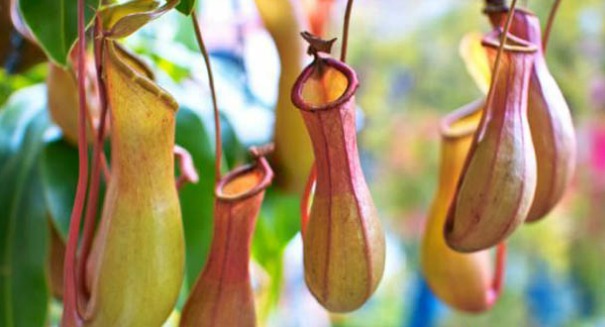
The study finds that the carnivorous pitcher plant keeps its leaves dry to allow scout ants to sniff it out and return safely back to the colony, bringing more ants it can capture later.
A carnivorous pitcher plant is changing its behavior in response to natural weather fluctuations, allowing it to give up its prey in order to capture more.
The pitcher plant, which has liquid-filled leaves shaped like funnels, has the ability to allow some of its prey to escape by “switching off” its trap, a clever strategy that is fascinating scientists, according to a Discovery News report.
A study published in the Proceedings of the Royal Society B shows that evolved strategies can often be as good as brains capable of thinking through problems. It also may solve a mystery about the pitcher’s plants, where its trapping surface is slippery when wet — but not when it the leaves are dry.
Scientists have determined that these traps are essentially “switched off” at certain times of the day and don’t catch insects, which was surprising as they initially believed that natural selection would choose plants that captured as many insects as possible.
However, a study by a team led by Ulrike Bauer of Bristol University’s School of Biological Sciences found that the plants, which are found in the jungles of Borneo, often capture large amounts of ants in batches. The team artificially kept the trapping surfaces wet all the time to see what would happen, and found that the plants didn’t capture these large batches of insects.
The reason is that ants are social insects that send a scout to search for food sources. The ant then reports back to the other ants that it found a large batch of sweet nectar, causing a large contingent of ants to descend upon it. If the trap captures this insect, it won’t be able to capture much more ants later.
As a result, the plants have involved an “off switch,” which allows scout ants to explore them and report back to the colony. Once the plant becomes wet, the ants can then get stuck in the pitcher.
Leave a Reply